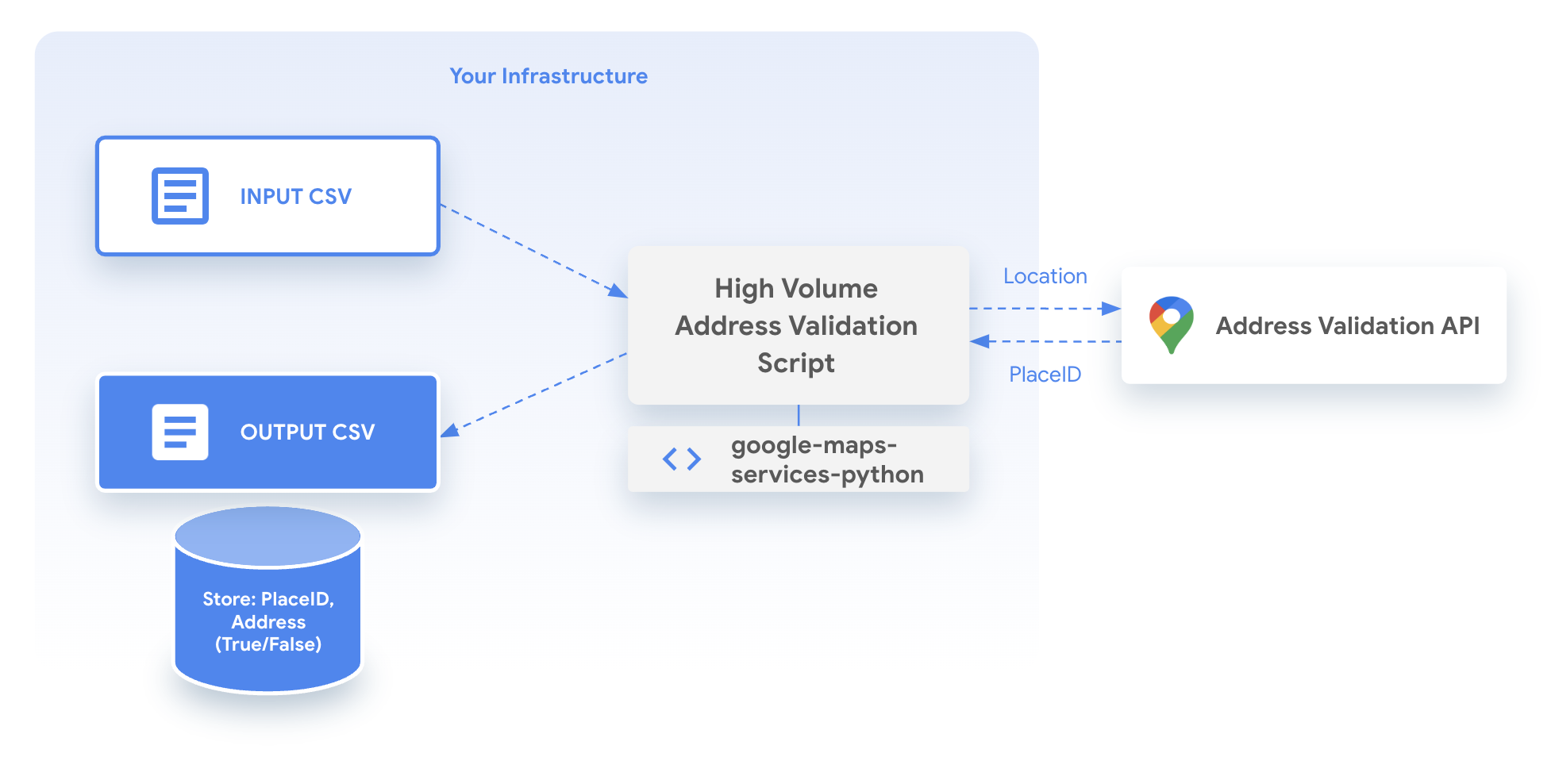Ziel
In den letzten Artikeln haben wir das Konzept der Adressvalidierung mit hohem Volumen und die Verwendung in verschiedenen Szenarien vorgestellt.
In diesem Artikel sehen wir uns eine Python-Bibliothek an, die Ihnen den Einstieg in die Implementierung der Adressvalidierung mit hohem Volumen erleichtern soll.
Sehen wir uns zuerst die Artikel zur Adressvalidierung mit hohem Volumen an:
Im Artikel Address Validation API zum Verarbeiten großer Adressmengen verwenden wird beschrieben, wie Sie die Validierung großer Mengen für API-Tests sowie für einmalige und wiederkehrende Adressvalidierungen verwenden.
Im Design Patterns of High Volume Address Validation wird die High Volume Address Validation-Bibliothek vorgestellt und die Verwendung der Python-Bibliothek in verschiedenen Laufzeitumgebungen auf der Google Cloud Platform erläutert.
Auf dieser Seite wird beschrieben, wie Sie mit der Python-Bibliothek für die Adressvalidierung mit hohem Volumen beginnen.
Übersicht über die Python-Bibliothek
Auf übergeordneter Ebene verhält sich die Python-Bibliothek so:

Python-Bibliothek verwenden
Laden Sie die Bibliothek von Github herunter und installieren Sie sie.
Weitere Informationen zur Bibliothek und ihrer Verwendung finden Sie in der Readme-Datei.

